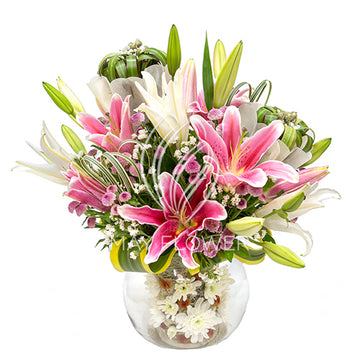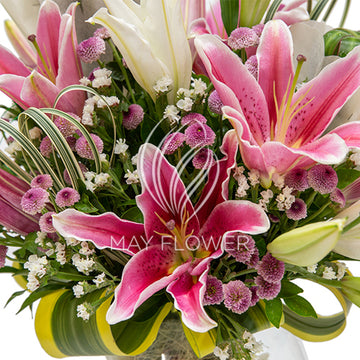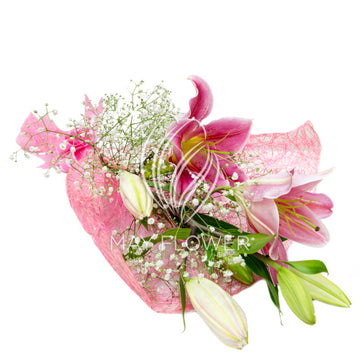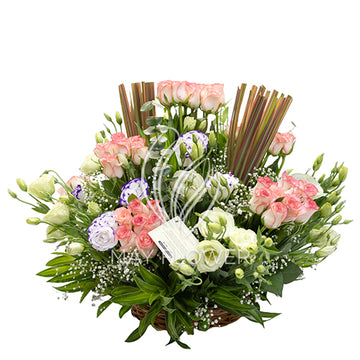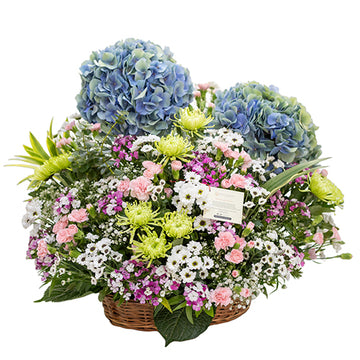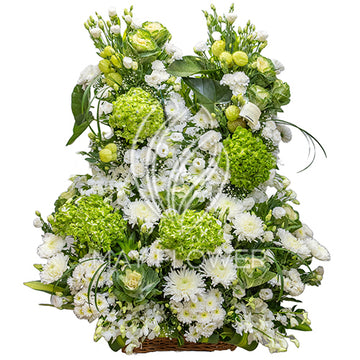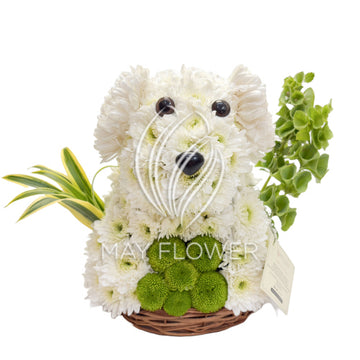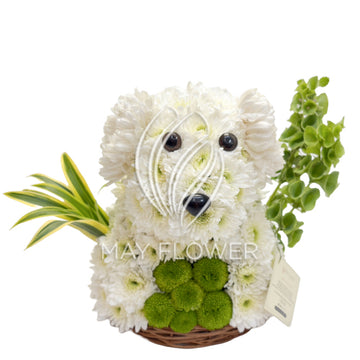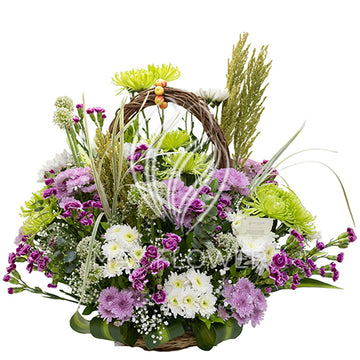Emotional Impact of Flowers Study
The Emotional Impact of Flowers Study was published in the April 2005 issue of Evolutionary Psychology.
With today’s high-tech and fast-paced lifestyle taking its daily toll on our lives, experts advise exercise and other personal lifestyle changes to relieve stress. According to behavioral research conducted at Rutgers, The State University of New Jersey, nature provides us with a simple way to improve emotional health – flowers. The presence of flowers triggers happy emotions, heightens feelings of life satisfaction and affects social behavior in a positive manner far beyond what is normally believed.
“What’s most exciting about this study is that it challenges established scientific beliefs about how people can manage their day-to-day moods in a healthy and natural way,” said Jeannette Haviland-Jones, Ph.D., Professor of Psychology at Rutgers and lead researcher on the study.
Research Findings
A team of researchers explored the link between flowers and life satisfaction in a 10-month study of participants’ behavioural and emotional responses to receiving flowers. The results show that flowers are a natural and healthful moderator of moods.
Flowers have an immediate impact on happiness. All study participants expressed “true” or “excited” smiles upon receiving flowers, demonstrating extraordinary delight and gratitude. This reaction was universal, occurring in all age groups.
Flowers have a long-term positive effect on moods. Specifically, study participants reported feeling less depressed, anxious and agitated after receiving flowers, and demonstrated a higher sense of enjoyment and life satisfaction.
Flowers make intimate connections. The presence of flowers led to increased contact with family and friends.
“Common sense tells us that flowers make us happy,” said Dr. Haviland-Jones. “Now, science shows that not only do flowers make us happier than we know, they have strong positive effects on our emotional well being.”
Sharing Space
The study also explored where in their homes people display flowers. The
arrangements were placed in areas of the home that are open to visitors – such as foyers, living rooms and dining rooms – suggesting that flowers are a symbol for sharing.
“Flowers bring about positive emotional feelings in those who enter a room,” said Dr. Haviland-Jones. “They make the space more welcoming and create a sharing atmosphere.”
Emotional Impact of Flowers Study Research Methodology
The Emotional Impact of Flowers Study was conducted by Jeannette M. Haviland-Jones, Ph.D., Professor of Psychology, Project Director, Human Development Lab at Rutgers, The State University of New Jersey. Dr. Haviland-Jones is a psychologist and internationally recognized authority in the role of emotional development in human behavior and nonverbal emotional signals and response.
The research adds a scientific foundation to what many consider to be common knowledge – that flowers have a strong, beneficial impact on those who receive them. The Society of American Florists worked in cooperation with the Rutgers research team, bringing an expertise of flowers to the project.
Study Participants
he participants were 147 women, ranging equally in age, educational level, and career and lifestyle choice. Women were studied because previous research on emotion demonstrates that women are more discerning of moods, more willing to participate in studies on moods and more involved in emotional management within the home and at work.
Flower Deliveries
Study participants knew they would have a
gift delivered, but they did not know what the gift would be. This “secrecy” was to obtain an honest first reaction to the gift as a measure of the direct effect of flowers on immediate mood.
Immediate Emotional Reaction
Trained researchers measured the behavior and emotional expression of participants when they received the flowers. Three different smiles as well as verbal reactions were coded upon the delivery of the flowers. The information was recorded into a field computer within the first 5 seconds of the
flower delivery, to measure accurately the first, immediate reaction.
Polite Smile
Polite Smile: This is used most commonly in quick greetings or acknowledgements. No discernible facial movement is present except the turning up of the corners of the mouth.
True Smile
True Smile: This is seen when there are possible changes in behaviour indicating pleasure. Hence it is called “true” – the person is truly happy.
Excited Smile
Excited Smile: This smile combines two emotions – excitement and happiness. Here we see the true smile, but also the eyebrows are raised so that there are high, horizontal wrinkles across the forehead.
Interviews
The participants were interviewed before getting their gifts, to give the research team a “baseline” of measure. From this, the researchers measured how feelings changed when participants had flowers in their homes. In the initial interview, interviewers asked the participants to evaluate their feelings over the past two to four days to assess their overall, general feelings. Then, several days after the gift was delivered (about 10 days after the first interview) participants were interviewed again to measure changes in feelings related to having flowers in the home.
Want To Get Him To Open Up? Send Flowers
A recent behavioral study conducted at Rutgers University shows that men who receive flowers demonstrate increased social interaction and happiness. This research expands on previous data collected, which showed that flowers enhance happiness and social connections among women.
Conducted by Rutgers University student researcher Holly Hale and psychology professor Jeannette Haviland-Jones, Ph.D., the study involved two groups of men who varied in age and ethnicity, one group who received a surprise gift of flowers and a control group who did not. The subjects’ verbal cues and body language (measures of social interaction) were studied.
The men who received flowers demonstrated increased eye contact in conversation, stood in closer proximity to the researchers, and produced more and truer smiles than those men who did not receive flowers.
While in general, women displayed a greater level of emotion in their study, the effects are equal. “When it comes to receiving flowers, men and women are on the same playing field,” said Haviland-Jones. “It seems that we all express extraordinary delight and increase our social behavior.”
So in general sending flowers by a woman to a man may have a better psychological effect than the other way around. Though 80% are sent by a man to a woman in this respect, trends are changing and we are noticing a shift and increase in the sending of floral bouquets to men as well!
